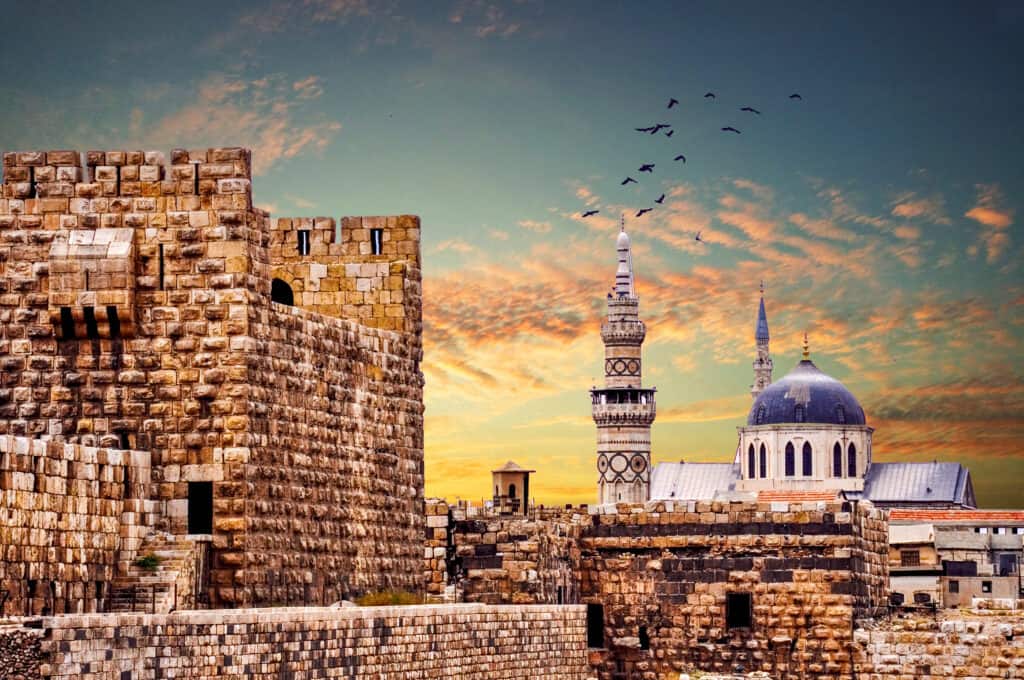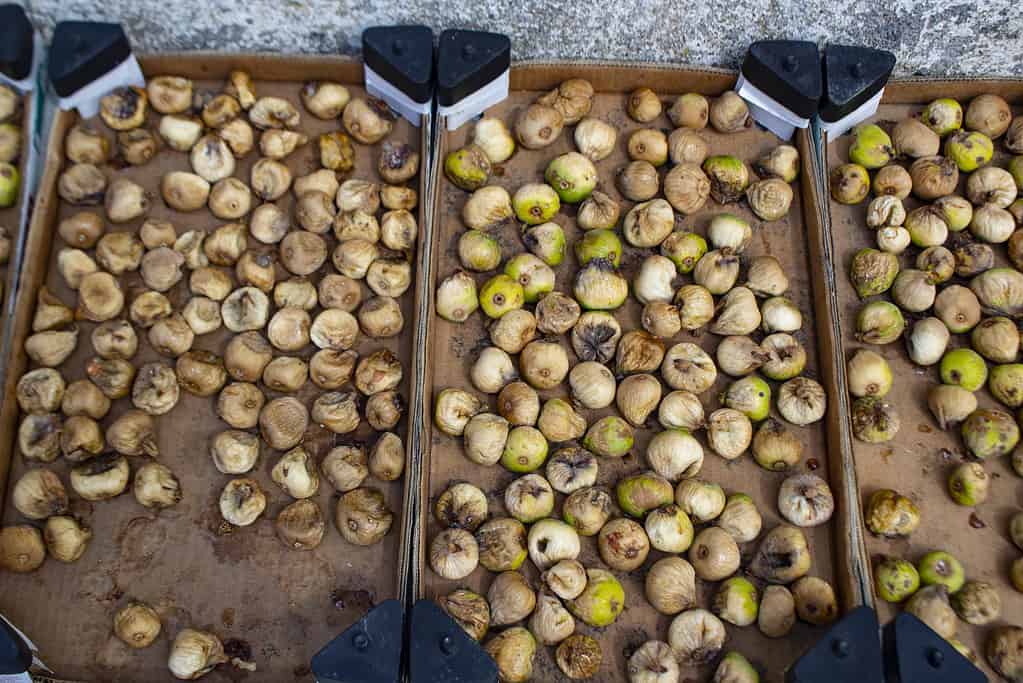
The oldest capital city in the world—and possibly the oldest continuously inhabited city overall—is Damascus, Syria.
©Fly_and_Dive/Shutterstock.com
Damascus, Syria, is the oldest capital city in the world, with archaeological evidence going back to possibly 10,000 BC. It’s in the runnings as the oldest city on earth.
Paul J. Kosmin, a Classics professor at Harvard, makes an interesting point about the city. That point shows the difficulty in deciding which city is the oldest. Kosmin essentially says we’d know a lot more about Damascus if it hadn’t stayed in one place for so long! There are no ancient “ruins” because so much of the city—historically speaking—is still standing, and in the same place.
Damascus: An Individual City Between Two Places

Damascus has an average elevation of 2230 feet.
©Mahmod5cy/Shutterstock.com
The city of Damascus is the capital of Syria. It has been the capital on and off since the Umayyad Empire of the 600s. There are about 2.5 million residents. Lebanon runs diagonally down the Levant, separating Syria from the Mediterranean Sea. Damascus is about a 75-mile drive from the coastal city of Beirut.
Damascus straddles Lebanon’s coastal, semi-tropical climate with a drier, overall desert climate of the Arabian peninsula. The Anti-Lebanon Mountains run along the Syrian border, creating a semi-arid steppe climate in this capital city. Yet, it is not the flat, grassy plains of Eurasia in terms of “steppe.” There is an oasis.
The Barada River hydrates this oldest capital city in the world, partially through melting mountain snow. The climate consists of hot summers and moderate winters.
Damascus has an average elevation of 2230 feet (680 meters).
As a large and bustling metropolis, there’s little wildlife presence in the city proper. However, the official animal of Syria is the hawk. It adorns the flag. The Iris damascena is a naturally growing plant on Mount Qasioun, a peak near Damascus. It has a speckled, salt-and-pepper appearance and is noted for its enormous bloom of over six inches (15 cm).
Damascus, Old School
There is historical evidence for Damascus being the oldest city on earth and the oldest capital city.
The site of Tell Ramad, near Syria in Damascus, has clay figurines dating back to 8,000 BC. That’s a long time. The earliest written records of the city come from lists taken by the pharaoh Thutmose III in the 15th century BC. Nearly all modern sources relay that the city has been inhabited without interruption since the third millennium BC.
The entire city is considered a UNESCO World Heritage Site. Damascus made the list only three years after the UN started these historical recognitions.
Damascus History, Age of Empires
All the names we remember from history class came and went in Damascus: the ancient Israelites, the Arameans, the Assyrians, the Ptolemaic, the Romans, the Persians, the Umayyads, Certain Turkish Dynasties, and the French. Damascus became the modern capital in 1921, and Syria became an effectively independent nation in 1946.
Each of the Abrahamic faiths has footprints in the city of Damascus as well. The texts of all three faiths mention the city by name.
Urban Planning, Long-Term
According to the UN, some of the earliest road planning in Damascus came from the Greeks. While known for their philosophy, they handed this one to the mathematicians: Damascus streets are laid out on a grid along the four-point compass.
The mountains, geography, and river put the city in a very fortunate place commercially. “The King’s Highway,” a trade route that goes back to the 8th century BC (and maybe even the Iron Age), ran through Damascus. This thoroughfare of goods allowed for thriving trade, including the capital’s world-famous bazaars.
Goods of Damascus
Steel
Damascus was known worldwide for its metallurgy, specifically its steel. Throughout the Middle Ages, blacksmiths and blade-makers from Damascus could produce the toughest, sharpest swords that surpassed Western-made steel.
Part of the process was their knack for trade: they received one-of-a-kind iron from India. But much of the quality in Damascus steel came from the unparalleled craftsmanship that long remained a secret. Part of the process was folding over the molten blade numerous times. That compounding also left it with its characteristic filigreed appearance, which knife makers still imitate today.
Silk and Fruits

Syria is a major exporter of figs.
©Herencias/iStock via Getty Images
Syria is number six in the world for fig production. The ancient city of Damascus was known from an early time for producing unparalleled natural delicacies. The nearby Greeks used the word “δαμάσκηνο” or “damascene”—a cognate of the word Damascus—for the plum. Apricots, dates, and nuts were also popular trade items; the city was known for its delicious dried fruits.
The silk trade made its way in as well. Various cultures had their hand in creating a particular namesake type of silk. But it was Damascus that got to put its name on “Damask” woven silk.
Damascus
The city is a hub of trade, faiths, climates, and historical regions. Damascus, the oldest capital city on earth—continuously inhabited for longer than almost any other place on earth—has thrived and isn’t going anywhere.
The photo featured at the top of this post is © Mahmod5cy/Shutterstock.com
Thank you for reading! Have some feedback for us? Contact the AZ Animals editorial team.






